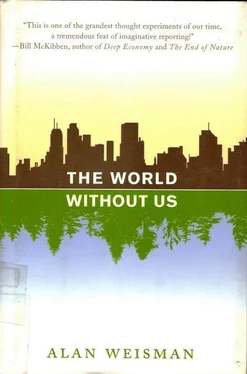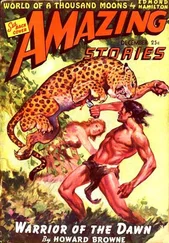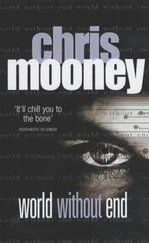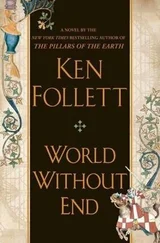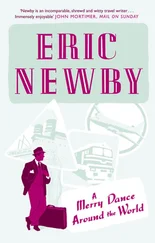In the past half-century, as the world’s human population doubled, the number of cats did so much faster. In U.S. Census Bureau pet figures, Temple and Coleman found that from merely 1970 to 1990, America’s cat count rose from 30 to 60 million. The actual total, however, must also include feral cats that form urban colonies and rule barnyards and woodlands in far greater densities than comparable-sized predators like weasels, raccoons, skunks, and foxes, which have no access to protective human shelter.
Various studies credit alley cats with up to 28 kills per year. Farm cats, Temple and Coleman observed, get many more than that. Comparing their findings with all the available data, they estimated that in rural Wisconsin, around 2 million free-ranging cats kill at minimum 7.8 million, but probably upwards of 219 million, birds per year.
That’s in rural Wisconsin alone.
Nationwide, the number likely approaches the billions. Whatever the actual sum may be, cats will do very well in a world without the people who took them to all the continents and islands they didn’t already inhabit, where they now outnumber and out-compete other predators their own size. Long after we’re gone, songbirds must deal with the progeny of these opportunists that trained us to feed and harbor them, disdaining our hapless appeals to come when we call, bestowing just enough attention so we feed them again.

IN FOUR DECADES of birding, ornithologist Steve Hilty, author of two of the world’s thickest field guides (to the birds of Colombia and Venezuela), has seen some strange human-caused changes. He’s watching one of them from the shore of a glacial lake just outside the town of Calafate in southern Argentina, near the Chilean border: kelp gulls from Argentina’s Atlantic coast, which have now spread across the country and grown 10 times more abundant simply from scavenging landfills. “I’ve watched them follow human trash across Patagonia like house sparrows going after spilled grain. Now there are far fewer geese on lakes, because gulls prey on them.”
In a world without people’s garbage, guns, and glass, Hilty predicts a reshuffling of populations back toward their former balance. Some things may take longer, as temperature shifts have done funny things to their ranges. Some brown thrashers in the southeastern United States today don’t bother to migrate, and red-wing blackbirds have even passed up Central America to winter over in southern Canada, where they now encounter a classic southern U.S. species, the mockingbird.
As a professional birding guide, Hilty has watched the decline of songbirds tilt into a plunge that has even nonbirders noticing the deepening silence. Among the missing in his native Missouri is our only blue-backed, white-throated warbler. Cerulean warblers used to depart the Ozarks each fall for mid-elevation Andean forests in Venezuela, Colombia, and Ecuador. With more of those being cut each year for coffee—or coca—hundreds of thousands of arriving birds must funnel into an ever-shrinking wintering ground, where there isn’t enough to feed them all.
One thing still heartens him: “In South America, very few birds have actually gone extinct.” That is huge, because South America has more bird species than anywhere. When the Americas were joined 3 million years ago, just below the juncture at Panama was mountainous Colombia, poised to be a giant species trap, with every niche from coastal jungle to alpine moor. Colombia’s number-one rank—more than 1,700 bird species—is sometimes challenged by ornithologists in Ecuador and Peru, which means that even more vital habitat still remains. Yet too often, just barely so: Ecuador’s white-winged brush finch now lives in only one Andean valley. Northeast Venezuela’s gray-headed warbler is confined to a single mountaintop. Brazil’s cherry-throated tanager is found on just a single ranch north of Rio.
In a world without people, the birds that survived would soon reseed South American trees that were displaced by rows of that Ethiopian immigrant Coffea arabica . With no one there to weed, new seedlings would battle coffee bushes for nutrients. In a few decades, shade from their canopies would slow the interloper’s growth, and their roots would strangle it until it choked.
Coca plants—native to the highlands of Peru and Bolivia, but needing chemical help anywhere else—won’t last two seasons in Colombia without men to tend them. But dead coca fields, like cattle pastures, will leave a checkerboard of empty bald spots where forest clandestinely came down. One of Hilty’s biggest concerns is for small Amazonian birds so adapted to dense cover that they can’t tolerate bright light. Many fail because they won’t cross open areas.
A scientist named Edwin Wills discovered that, just after the Panama Canal was completed. As Lake Gatun filled, some mountains ended up as islands. The biggest, 3,000-acre Barro Colorado, became a research laboratory for the Smithsonian’s Tropical Studies Institute. Wills began to study foraging antbirds and ground cuckoos—until suddenly they were gone.
“Three thousand acres weren’t enough to sustain a population of species that won’t cross open water,” says Steve Hilty. “In forest islands separated by pastures, it’s the same.”
The birds that manage to survive on islands, as Charles Darwin momentously observed among finches in the Galápagos, can adapt so tightly to local conditions that they become species unto themselves, found nowhere else. Those conditions explode, however, once humans arrive with their pigs, goats, dogs, cats, and rats.
In Hawaii, all the roast feral pig devoured in luaus can’t keep up with the mayhem their rooting wreaks on forests and bogs. To protect exotic sugarcane from being eaten by exotic rats, in 1883 Hawaiian growers imported the exotic mongoose. Today, rats are still around: the favorite food of both the rat and the mongoose is the eggs of the few native geese and nesting albatrosses left on Hawaii’s main islands. In Guam, just after World War II, a U.S. transport plane landed bearing stowaway Australian brown tree snakes in its wheel-wells. Within three decades, along with several native lizards, more than half the island’s bird species were extinct, and the rest designated uncommon or rare.
When we humans become extinct ourselves, part of our legacy will live on in the predators we introduced. For most, the only constraints on their rampant proliferation have been the eradication programs with which we’ve tried to undo our damage. When we go, those efforts go with us, and rodents and mongooses will inherit most of the South Pacific’s lovely isles.
Although albatrosses spend most of their lives on their majestic wings, they still must land in order to breed. Whether they will still have enough safe places to do so is uncertain, whether we’re gone or not.
CHAPTER 15

Hot Legacy
AS BEFITS A chain reaction, it happened very fast. In 1938, a physicist named Enrico Fermi went from Fascist Italy to Stockholm to accept the Nobel Prize for his work with neutrons and atomic nuclei—and kept going, defecting with his Jewish wife to the United States.
That same year, word leaked that two German chemists had split uranium atoms by bombarding them with neutrons. Their work confirmed Fermi’s own experiments. He had guessed correctly that when neutrons cracked an atomic nucleus, they would set more neutrons free. Each would scatter like a subatomic shotgun pellet, and with enough uranium handy, they would find more nuclei to destroy. The process would cascade, and a lot of energy would be released. He suspected Nazi Germany would be interested in that.
Читать дальше
